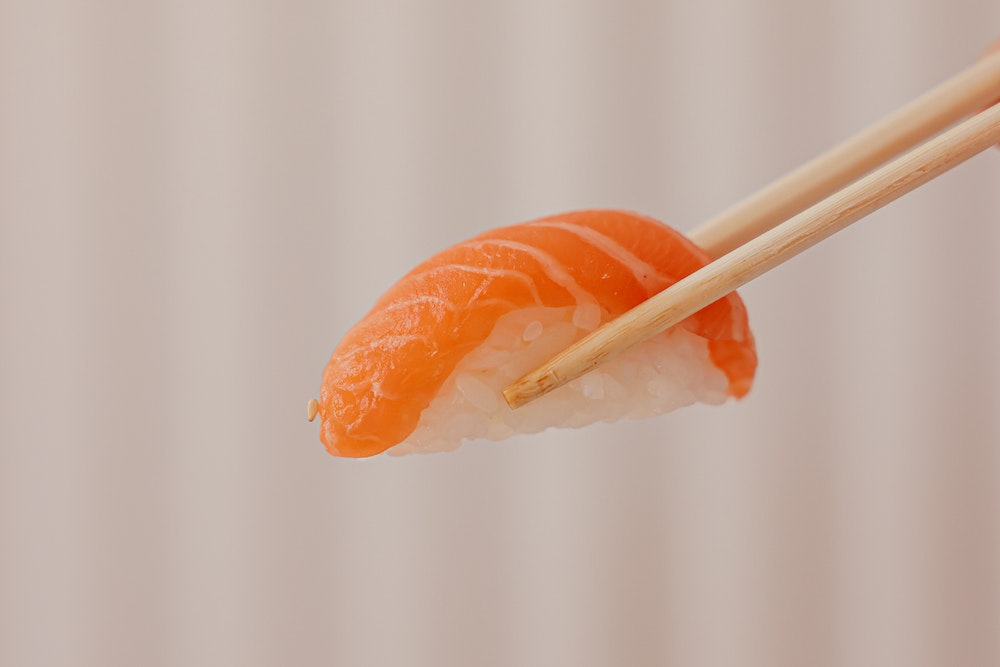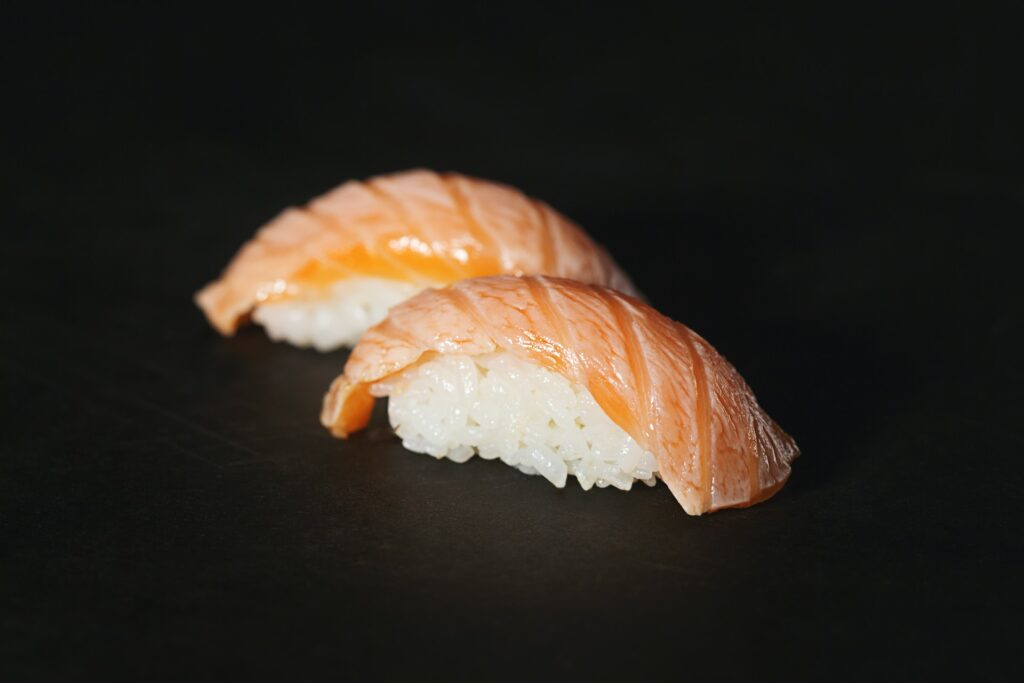Sushi is a popular Japanese dish that has gained popularity all over the world. It is a delicacy that is enjoyed by many people, but not everyone knows how long sushi lasts or how to store it properly.
Understanding how long sushi is good for and how to store it properly is essential to avoid food poisoning and ensure that it remains fresh and tasty.
Sushi is made of raw fish, rice, and other ingredients, which makes it a perishable food item. The shelf life of sushi depends on several factors, including the type of sushi, how it is prepared, and how it is stored.
Generally, sushi is good for up to 24 hours when refrigerated, but it can last up to four days if stored correctly. It is important to know the signs of spoilage in sushi to avoid consuming it when it has gone bad.
Key Takeaways
- Sushi is a perishable food item that should be consumed within 24 hours of preparation.
- Proper storage is essential to ensure that sushi remains fresh and safe to eat.
- Knowing the signs of spoilage in sushi is crucial to avoid food poisoning.
Understanding Sushi

Sushi is a popular Japanese dish that has become a favorite all over the world. It is a dish made with vinegared rice combined with a variety of ingredients, including raw fish, vegetables, and seaweed. Sushi is often served with soy sauce, wasabi, and pickled ginger.
Ingredients of Sushi
The ingredients used in making sushi can vary depending on the type of sushi being made. Some common ingredients used in sushi include:
- Raw fish: This is the most common ingredient used in sushi. It is usually sliced thinly and served on top of a small ball of rice.
- Rice: Sushi rice is a short-grain rice that is cooked with vinegar, sugar, and salt. It is the base of all sushi.
- Vegetables: Vegetables such as cucumber, avocado, and carrot are often used in sushi. They add a crunchy texture and a fresh flavor.
- Seaweed: Nori seaweed is used to wrap around the sushi rolls. It adds a salty flavor and a chewy texture.
Types of Sushi
There are many different types of sushi, each with its own unique flavor and texture. Some popular types of sushi include:
- Nigiri: This is a type of sushi that consists of a small ball of rice topped with a slice of raw fish.
- Uramaki roll: This is a type of sushi that is made with rice on the outside and seaweed on the inside. It is often filled with a variety of ingredients such as avocado, cucumber, and crab meat.
- Maki rolls: These are sushi rolls that are made with seaweed on the outside and rice on the inside. They are often filled with a variety of ingredients such as raw fish, vegetables, and avocado.
- California roll: This is a type of sushi that is made with crab meat, avocado, and cucumber.
- Vegetarian: This is a type of sushi that is made without any raw fish or seafood. It is often filled with a variety of vegetables such as cucumber, avocado, and carrot.
- Dragon rolls: This is a type of sushi that is made with eel, avocado, and cucumber.
In conclusion, sushi is a delicious and healthy dish that is enjoyed by people all over the world. It is important to keep in mind the different types of sushi and their ingredients when ordering or making sushi.
Sushi Preparation and Consumption

Preparation Methods
Sushi is a Japanese delicacy that is often prepared by a skilled sushi chef. The preparation of sushi requires the use of fresh ingredients and precise techniques.
The sushi chef must be knowledgeable about the different types of fish and seafood that are used in sushi, as well as the various types of rice and other ingredients.
To prepare sushi, the chef will first cook the rice and then season it with vinegar, salt, and sugar. The fish and seafood are then sliced and arranged on top of the rice.
Sushi can also be prepared with vegetables or other ingredients. The sushi chef will often add ginger, wasabi, and soy sauce to the plate to enhance the flavor of the sushi.
It is important to note that sushi should only be prepared by a skilled sushi chef, as improper preparation can lead to food poisoning and other health risks.
Consumption Practices
When consuming sushi, there are certain practices that should be followed to ensure the best possible experience. Sushi is traditionally eaten with chopsticks, but it is also acceptable to eat with your hands.
It is important to dip the sushi in soy sauce and not to pour soy sauce directly onto the sushi, as this can result in an overpowering flavor.
Ginger is often served with sushi to cleanse the palate between different types of sushi. Wasabi, a spicy green paste, is also served with sushi and can be added to the soy sauce for an extra kick of flavor.
Sushi should be consumed as soon as it is prepared to ensure the freshest flavor and to avoid any potential health risks. Leftover sushi should be refrigerated and consumed within a few days. It is not recommended to consume sushi that has been left out at room temperature for an extended period of time.
Overall, sushi is a delicious and healthy Japanese delicacy that can be enjoyed by anyone. By following proper preparation and consumption practices, sushi can be a safe and enjoyable dining experience.
Sushi Storage and Shelf Life

Storage Methods
Proper storage is crucial to maintain the quality and safety of sushi. Sushi should be consumed as soon as possible after purchase or preparation. If you have leftover sushi, it should be stored promptly to prevent spoilage.
Sushi can be stored in an airtight container in the refrigerator for up to 24 hours. If you need to store sushi for a longer period, you can freeze it for up to one month. To freeze sushi, wrap it tightly in plastic wrap or foil and place it in an airtight container.
When storing sushi in the refrigerator, it’s important to keep it away from other foods to prevent cross-contamination. You should also avoid storing sushi at room temperature for more than two hours, as bacteria can grow rapidly at room temperature.
Shelf Life of Sushi
The shelf life of sushi depends on the type of sushi and how it is stored. Sushi that contains raw seafood should be consumed within 12 to 24 hours if stored in the refrigerator. Cooked sushi can last up to three to four days in the refrigerator.
If you want to store sushi for a longer period, you can freeze it. Frozen sushi can last up to one month. However, the quality of sushi may deteriorate after freezing, so it’s best to consume it as soon as possible after thawing.
It’s important to note that sushi should always be stored in an airtight container to prevent it from drying out and absorbing odors from other foods in the refrigerator. Additionally, you should always check the expiry date of the sushi before consuming it. If the sushi has passed its expiry date, it should be discarded.
Signs of Spoilage in Sushi

Sushi is a popular Japanese dish that is enjoyed by many people around the world. It is made with raw fish, rice, and other ingredients, and is often served with soy sauce, wasabi, and pickled ginger.
While sushi is a delicious and healthy food, it is important to be aware of the signs of spoilage in sushi to avoid getting sick.
Visual Indicators
One of the most obvious signs of spoilage in sushi is a change in color or appearance. Fresh sushi should have a bright and vibrant color, and the fish should be firm and glossy. If the sushi looks dull or discolored, or if the fish looks mushy or slimy, it is likely spoiled.
Another visual indicator of spoilage is the presence of mold. If you see any mold on the sushi, do not eat it.
Olfactory Indicators
Another way to tell if sushi is spoiled is by its smell. Fresh sushi should have a clean and fresh odor, with a slight hint of the ocean. If the sushi smells sour or rotten, it is likely spoiled and should not be eaten.
It is important to note that some types of sushi, such as mackerel, have a stronger odor than others, so it is important to use your judgement when assessing the smell of sushi.
In summary, there are several signs of spoilage in sushi that you should be aware of, including changes in color, appearance, smell, and the presence of mold. If you notice any of these signs, do not eat the sushi. It is always better to be safe than sorry when it comes to food safety.
Health Risks Associated with Spoiled Sushi
Sushi is a popular Japanese dish that is enjoyed by many people around the world. However, sushi is a delicate dish that requires proper storage and handling to prevent spoilage.
If sushi is not stored properly, it can lead to the growth of harmful bacteria, which can cause foodborne illnesses. In this section, we will discuss the health risks associated with spoiled sushi.
Foodborne Illnesses
Spoiled sushi can lead to foodborne illnesses such as salmonella and other infections. The bacteria that cause food poisoning can multiply rapidly in sushi that is not stored at the correct temperature.
Symptoms of foodborne illnesses include stomach cramps, diarrhea, nausea, vomiting, and infection. It is important to note that even cooked sushi can cause food poisoning if it is not stored properly.
Regulations and Guidelines
The USDA and FDA have regulations and guidelines in place to ensure the safety of sushi. These regulations require that sushi be stored at a temperature below 40°F (4°C) to prevent the growth of harmful bacteria.
Sushi should be consumed within 24 hours if it contains raw fish and within 48 hours if it contains cooked seafood. It is also important to note that the quality of the ingredients used in sushi can affect its shelf life.
To prevent foodborne illnesses, it is important to handle and store sushi properly. Sushi should be wrapped in plastic wrap and stored in airtight containers in the refrigerator.
It is also important to check the odor and texture of sushi before consuming it. If sushi smells bad or has a slimy texture, it should be discarded immediately.
In conclusion, spoiled sushi can lead to foodborne illnesses that can cause serious health problems. It is important to follow regulations and guidelines to ensure the safety of sushi. Proper storage and handling of sushi can prevent the growth of harmful bacteria and ensure that it is safe to consume.
Buying and Storing Sushi Safely

Selecting Fresh Sushi
When buying sushi, it is essential to ensure that it is fresh. If you are purchasing sushi from a supermarket, check the sell-by date on the packaging. Make sure to choose sushi that has the latest sell-by date.
If you are buying sushi from a restaurant, make sure that it looks fresh and has a pleasant smell. Fresh sushi should have a bright color, and the rice should be firm and not mushy.
When selecting sushi that contains raw fish, it is essential to ensure that the fish is fresh. Fresh fish should have clear eyes, shiny skin, and a pleasant smell. If the fish looks cloudy or has a dull appearance, it is not fresh and should not be consumed.
Safe Storage Practices
Once you have purchased your sushi, it is crucial to store it properly to maintain its freshness and prevent foodborne illness. Here are some safe storage practices to follow:
- Refrigerate sushi as soon as possible after purchase. Sushi that contains raw fish should be consumed within 24 hours, while cooked sushi can last up to 3-4 days in the refrigerator.
- Store sushi in an airtight container to prevent moisture from getting in and affecting the texture of the rice.
- If you have leftover sushi, wrap it tightly in plastic wrap or foil before storing it in the refrigerator.
- Do not leave sushi at room temperature for more than two hours, as this can lead to bacterial growth and spoilage.
- Do not freeze store-bought sushi, as it may affect the quality and flavor of the product.
It is also important to note that the cold chain should be maintained when transporting sushi from the store or restaurant to your home. If you are traveling a long distance, consider packing the sushi in a cooler with ice packs to keep it fresh.
By following these safe storage practices, you can enjoy your sushi while maintaining its freshness and quality.
Related post: How Long Can Sushi Sit Out For
Frequently Asked Questions
Can you eat sushi that’s been in the fridge for a week?
No, it is not recommended to eat sushi that has been in the fridge for a week. Sushi is a perishable food item, and it can spoil quickly if not stored properly. It is best to consume sushi within 24 hours of purchase or preparation.
What is the shelf life of sushi?
The shelf life of sushi depends on several factors, including the type of sushi and how it is stored. Generally, sushi can last for up to 24 hours in the fridge. However, some types of sushi, such as cooked sushi or vegetarian sushi, can last for up to 48 hours in the fridge.
How long can sushi last in the refrigerator?
Sushi can last for up to 24 hours in the fridge. However, if you want to store sushi for longer, it is best to freeze it. Frozen sushi can last for up to 2 months in the freezer.
Is it safe to eat sushi that’s been left out overnight?
No, it is not safe to eat sushi that has been left out overnight. Sushi is a perishable food item, and it can spoil quickly if not stored properly. It is best to consume sushi within 24 hours of purchase or preparation.
How can you tell if sushi has gone bad?
You can tell if sushi has gone bad by looking for signs of spoilage, such as a sour smell, slimy texture, or discoloration. If you notice any of these signs, it is best to discard the sushi.
Can you reheat sushi?
No, it is not recommended to reheat sushi. Sushi is meant to be eaten at room temperature or slightly chilled. Reheating sushi can cause it to become dry and lose its flavor.







